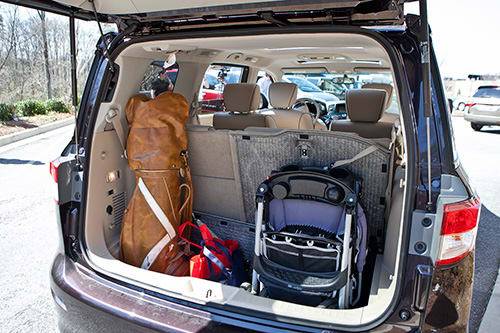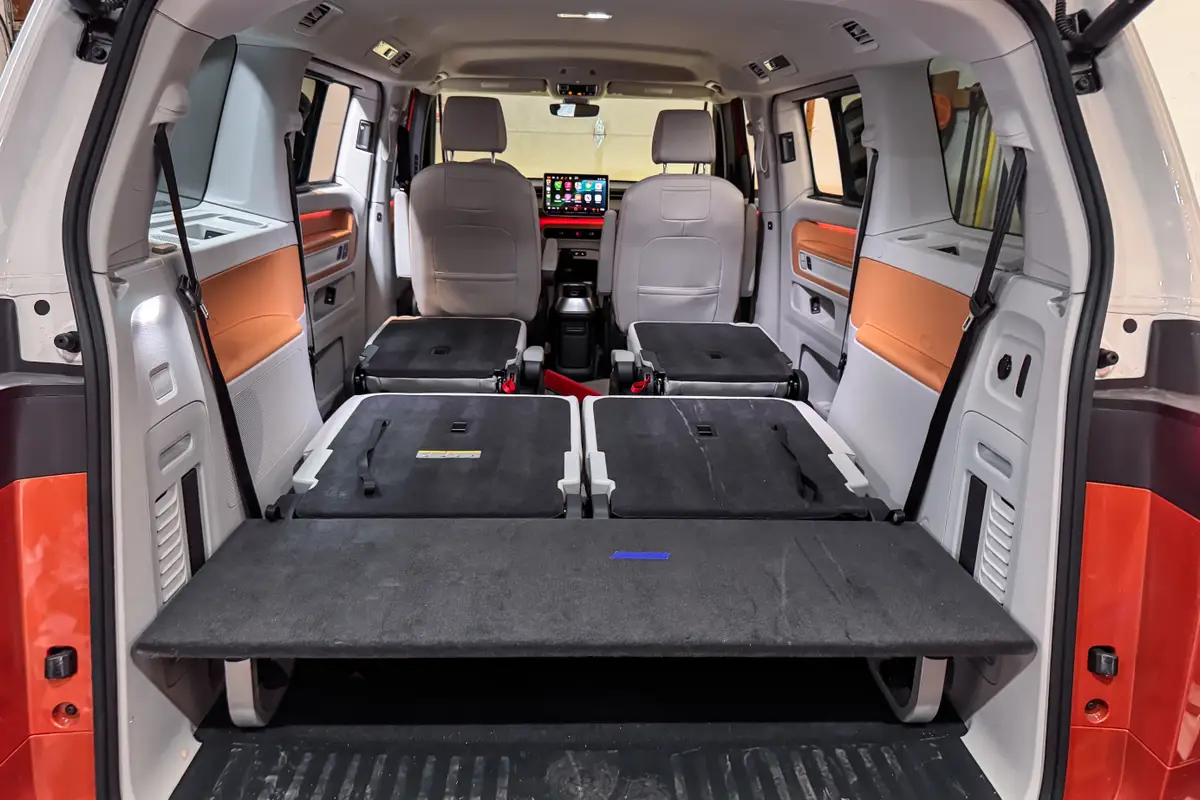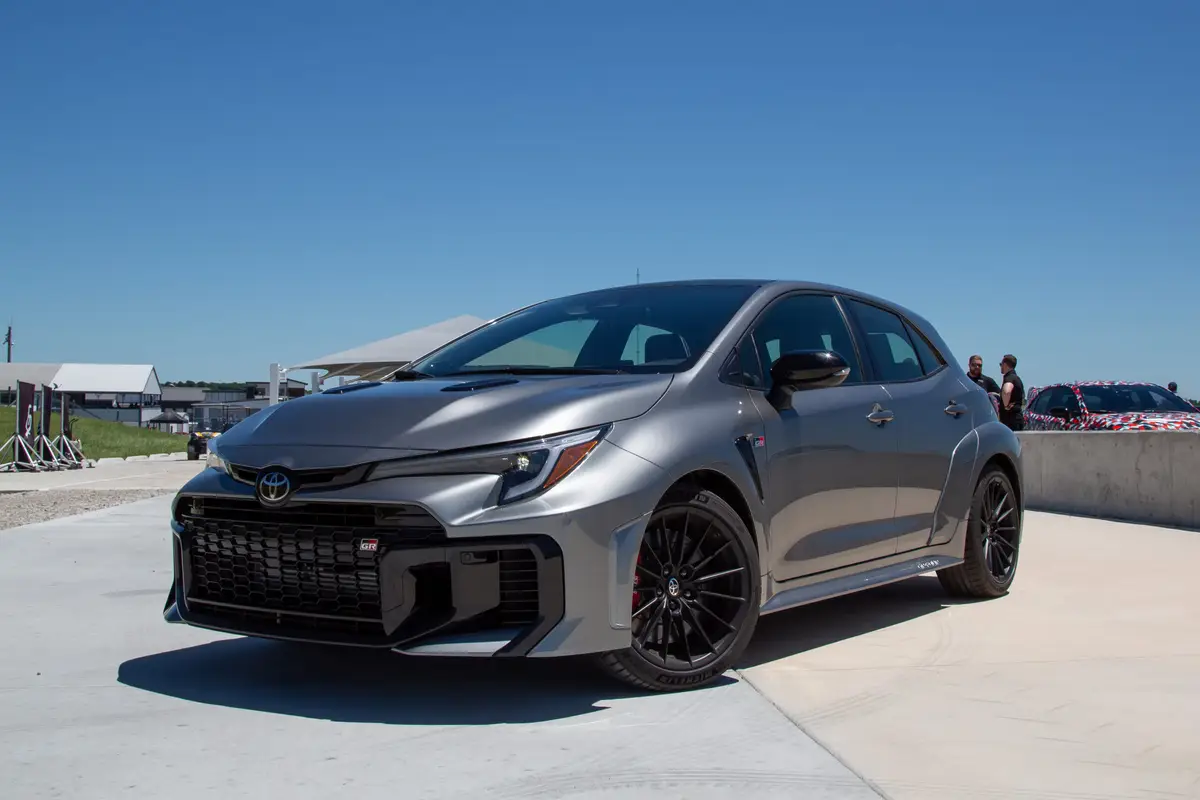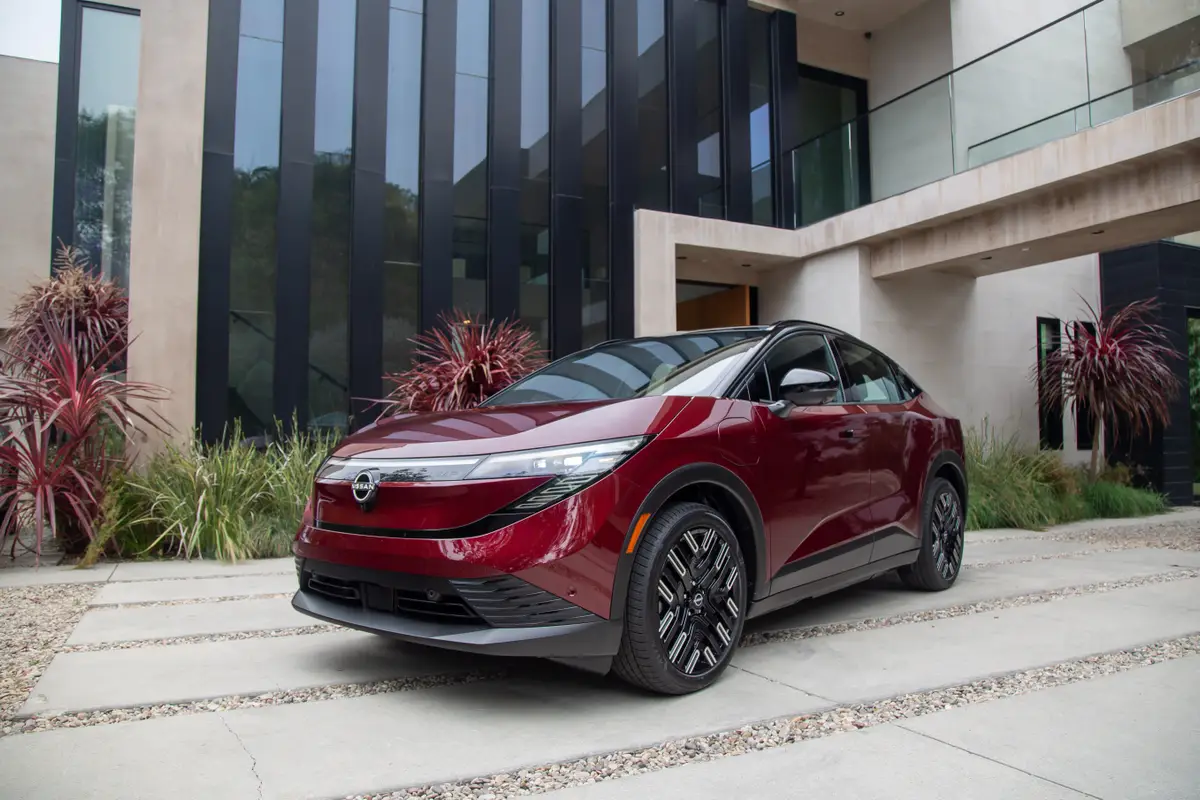Top Minivan? Nissan Quest May Offer Best Cargo Hauling in the Real World

Minivans are known for their impressive storage wells behind the third-row seats, maximizing cargo space. But what should be said is that the area is more vertical than horizontal. It begs the question, how much of a minivan’s cubic footage can you really use?
Related: Can a Minivan Be Stylish?
Well, that depends on what you’re carrying. Luggage works well in minivan storage wells because it tends to be stackable and it’s not too worrisome when it inevitably falls out when the liftgate is opened. And there’s no feeling quite like propping that big stroller upright and still being able to see out the rear window.
But most of us don’t carry luggage around in our daily lives, and eventually/thankfully the kids outgrow strollers; it’s usually other items such as grocery bags that aren’t as sturdy that create challenges in the cargo area. After all, there are only so many grocery bags that can be stored on top of each other.
Which minivans make the best of this cargo conundrum? And what automakers offer optional equipment to keep your stuff wrangled when the cargo space needs an assist? Let’s have a look.

With a total of 37.1 cubic feet of cargo space, the Nissan Quest beats its competitors on storage, and it’s the minivan’s unique cargo area design that puts it over the top. The Quest’s cargo well has just 11.4 cubic feet of space, but it has a built-in cover that when used allows for an additional 25.7 cubic feet of cargo space on top of the storage well. The third-row seats handily fold forward, so the well isn’t used to store the folded seats like it is in other minivans. But wait, there’s more! In addition to its handy storage wells, Nissan provides an optional Value Cargo Package ($230) that includes a factory-installed cargo organizer.
No other minivan has a cargo-area setup like the Quest, but some automakers offer accessories to make better use of the cargo well. We focused on organizing systems and trays instead of cargo nets.
The family-friendly Toyota Sienna has the largest cargo well at 39.1 cubic feet in the minivan class. Toyota also offers a cargo organizer for $239. The removable bins have covers that allow parents to layer on the grocery bags and more for greater cargo capacity.
When it comes to cargo well size, Honda’s Odyssey follows closely at 38.4 cubic feet. Honda’s high-end cargo management system rings up at $150 for three separate soft-sided bags with handles for easy carrying. The sides and handles appear to fold into the center, creating that desirable cover effect — allowing parents to pile stuff on top of the bags for exceptional cargo volume. Another option is Honda’s molded plastic cargo tray for $114. It has raised sides to keep sand and dirt from spilling over.
Of course, the Chrysler Town & Country and its sister vehicle, the Dodge Grand Caravan, are perennial favorites for families, and they both supply 33.0 cubic feet behind the third row. Through Mopar, Chrysler offers a four-compartment soft-sided tote for the cargo well for $32.15.
Kia just redesigned the all-new 2015 Sedona minivan, which has 33.9 cubic feet of space behind the third row to stow items such as groceries or luggage. No word yet on whether Kia will offer a cargo system for the storage well.
While more cargo space may seem better for families and their gear, it’s worth considering the real-world functionality of the third row, not just cubic feet alone.
Cars.com photos by Ian Merritt
Featured stories




